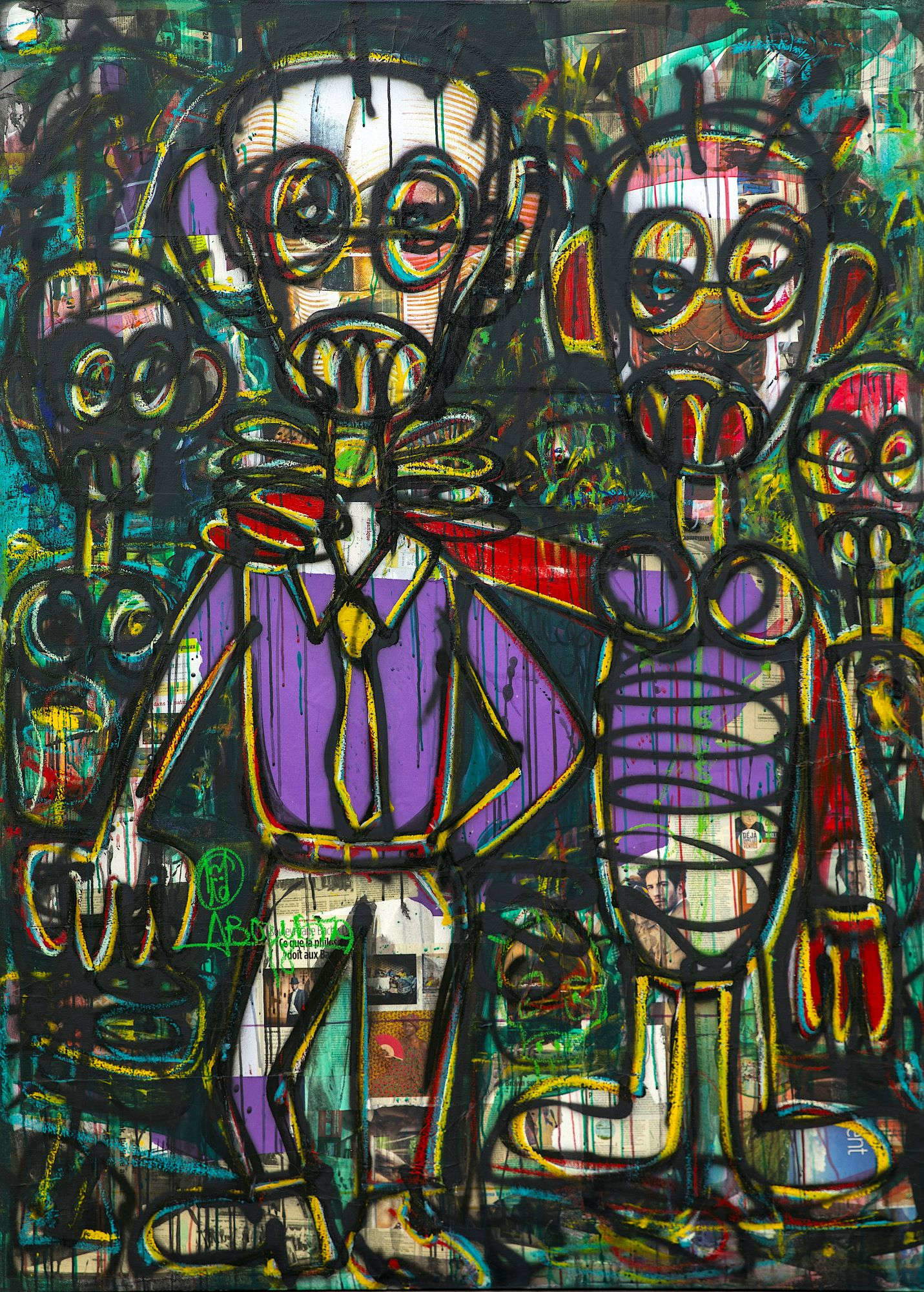African art takes center stage in Pietrasanta with the exhibition titled Africa Tunes, a group show curated by Alessandro Romanini, hosted at the Complesso di Sant’Agostino from Jan. 20 to March 17, 2024, and produced by the City of Pietrasanta in collaboration with The Project Space and Lis10 Gallery. The idea behind the exhibition, which features work by 17 African artists from the last two generations, is that contemporary African creativity (painting, sculpture and photography can be found in the itinerary) demonstrates how Africa is no longer a continent disconnected from the international geo-cultural and socio-political map, but that it has even inserted itself as a protagonist at the top of the global creative debate, from music to cinema, from fashion design to literature, and on to the visual arts where by now African artists are increasingly present (and increasingly appreciated) when they exhibit their works at biennials, art fairs, and auctions, or when they enter the collections of museums and foundations.
Another line of discussion is the conflicts that still ravage Africa, not least in view of the fact that 2024 marks the 30th anniversary of the genocide in Rwanda, when during the violence perpetrated under the responsibility of the Hutu-led government at least 500,000 ethnic Tutsi Rwandans were barbarously killed (and the violence did not spare even moderate Hutus). And also this year marks the 30th anniversary of the first racially nondiscrimination-free elections that took place in South Africa and saw Nelson Mandela win. Many of the artists in the exhibition experienced these events up close and are confronted with artists from earlier generations who were culturally formed in the context of the colonial independence won in the 1960s and pursued an identity claim after colonization.





The exhibition begins in the churchyard of St. Augustine’s Church with a sculpture by Ivorian Brice Esso, an artist who fuses African themes with the technical tradition of Italian Renaissance plastic art, and then enters the interior of the church with works by another Ivorian, Aboudia. These are works with an unmistakable style borrowed from the expressive forms with which the street children in Abidjan (almost always the protagonists of his paintings) “decorated” the walls of the city, animating them with status symbols, fuoriserie, televisions, self-portraits and “statements,” the only way to bear witness to their existence. In the other rooms of the exhibition venue, one encounters the work of Esther Mahlangu representing South Africa, standard-bearers of the centuries-old Ndebele style of painting, testifying to their political and social commitment: from the defense of childhood, to environmental sensitivity among others, passing through the claims of gender rights. The magical, and ritualistic aptitude for art, as well as the desire to keep alive the artistic identity tradition of the roots, reworked in a harmonious formula that links it to thecontemporary international iconography, are the themes in the works of Mederic Turay (Morocco), Ajarb Bernard Ategwa (Cameroon), Tope Fatunmbi (Nigeria), Ebenezer Akinola (Nigeria), Oluwole Omofemi (Nigeria), Tafadzwa Tega (Zimbabwe), Nù Barreto (Guinea Bissau) and the very young Ivorian Nanglè.
There is no shortage of internationally renowned artists who participated in the last Venice Biennale, such as the Ivorians Armand Boua, Yeanzi and Laetitia Ky: the latter, in particular, has been able to create a language that blends body art and photography that is perfectly matched to a relentless activism for women’s rights. Along similar lines is the young Nigerian artist Michelle Okpare , who offers ethnic color patterns that represent expressive alphabets of a nonverbal language. And the Senegalese Seni Awa Camara already present at the epochal exhibition Magiciens de la Terre in 1989 in Paris with her terracotta sculptures with ritual and identity values while the Mozambican Gonçalo Mabunda, testifies with his sculptures, composed of war remnants, to the thaumaturgic power of art, its ability to transform scars into poetry and warning.
The exhibition is open with free admission from Jan. 20 to March 17, 2024 at the Church and Cloister of Sant’Agostino in Pietrasanta (Lu), Via Sant’Agostino 1, Tuesday to Friday from 4 to 7 p.m. and Saturday and Sunday 10 a.m.-1 p.m. and 4 to 7 p.m. Closed Mondays.
 |
| Pietrasanta, African art stars in the church and cloister of St. Augustine |
Warning: the translation into English of the original Italian article was created using automatic tools. We undertake to review all articles, but we do not guarantee the total absence of inaccuracies in the translation due to the program. You can find the original by clicking on the ITA button. If you find any mistake,please contact us.